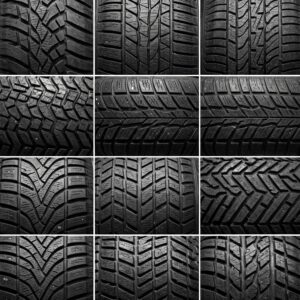Understanding Tyre Patterns and Tread Depth in New Zealand
Tyres are crucial for vehicle safety and performance. The pattern on your tyres affects grip, handling, and how well your vehicle performs in different conditions. Here’s what you need to know about tyre patterns and the legal tread depth in New Zealand.
Different Tyre Patterns
There are several types of tyre patterns, each designed for specific uses:
- Standard/Rib Pattern: Offers good handling and fuel efficiency.
- All-Season Pattern: Provides a balance of wet and dry performance.
- Winter Pattern: Designed for optimal grip in snow and ice.
- Off-Road Pattern: Aggressive tread for maximum traction on unpaved surfaces.
- Asymmetric Tread: Designed with distinct tread patterns on its inner and outer sides, each optimized for specific performance characteristics, enhancing handling and stability in both dry and wet conditions.
Here’s an image showcasing various tyre patterns.
Minimum Tread Depth in New Zealand
The legal minimum tread depth for car tyres in New Zealand is 1.5mm across the central three-quarters of the tread width. This is essential for maintaining grip and safety, especially in wet conditions.
- Most tyres have moulded tread-depth indicators. When the tread is flush with these indicators, it’s at the minimum legal depth.
- It’s recommended to maintain a tread depth of at least 3mm for optimal safety, as wet grip significantly decreases below this level.
- You can check your tread depth using a tyre tread depth checker or a 20-cent coin. If you can see the whole number 20, your tread is likely at or below 2mm.
Driving with tyres below the legal tread depth can result in fines and compromise your safety. Regularly check your tyres to ensure they meet the minimum requirements.



